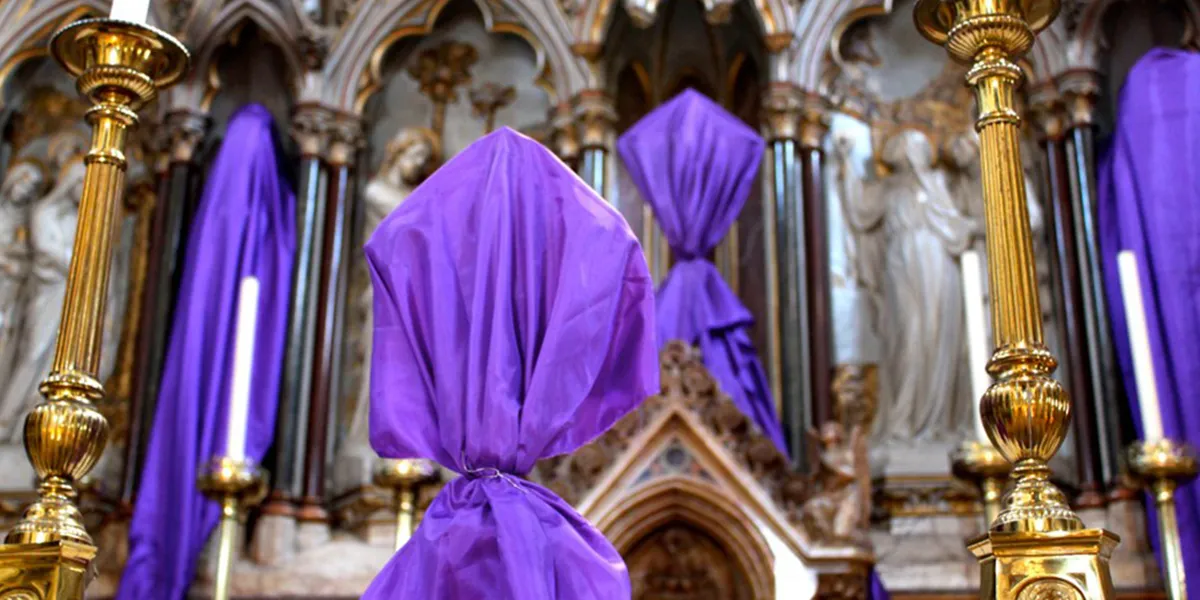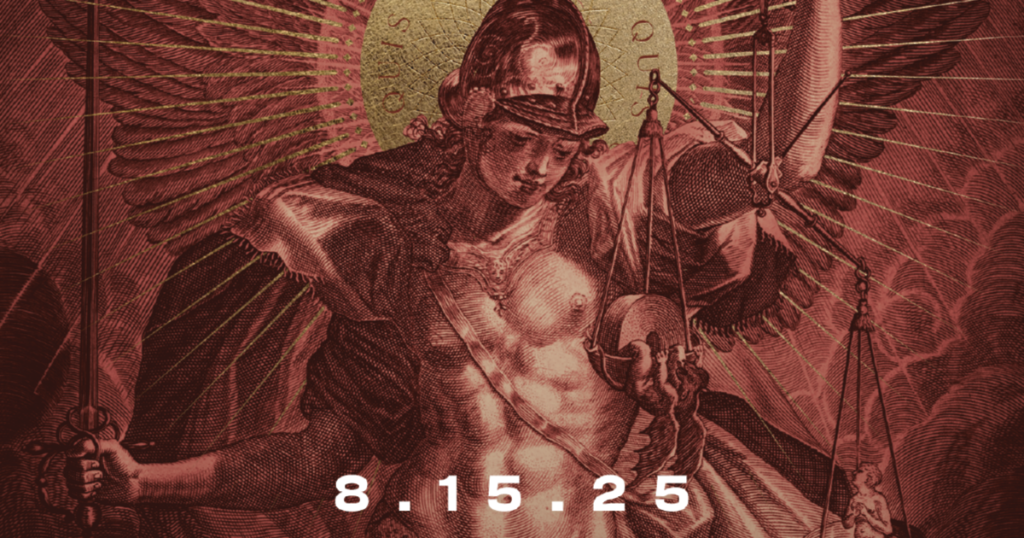When you step into church next weekend, you might notice that something is different. As you look around, you’ll notice that all of the beautiful statues and artwork have been covered up. Why has this been done?
Reason 1: Passiontide
The first reason is that it is now Passiontide. As I noted in an article at the beginning of Lent, the last two weeks of Lent are set aside to reflect on the Passion of Christ. The tradition of covering the images indicates that we are changing the emphasis to the Passion.
If you noticed the covers on the statues, they have done their job. They made you realize that something is different. Our senses are heightened in the absence of images, and we become more aware of what is missing. By hiding the beautiful artwork, the church invites us to listen closely to the readings during Passiontide.
It is the (optional) custom in the Dioceses of the United States to cover crosses and images throughout the church from the fifth Sunday of Lent (Passion Sunday). Crosses remain covered until the end of the Celebration of the Lord’s Passion on Good Friday, but images remain covered until the beginning of the Easter Vigil.
Reason 2: Fasting With Our Eyes
The covers might surprise you or even make you a bit sad because we’re missing out on something beautiful. By covering the artwork, we have given up something beautiful. The covering of the statues is the same kind of thing we have been doing all Exodus 90 and Lent; we are giving up good things to focus on better things.
The veiling art shifts our gaze from visual stimuli to the essence of the Passion, enhancing our sensory awareness towards what’s absent. Like swapping a delicious meal for a meatless dinner, it’s the spiritual diet our eyes follow that prompts us to be attentive to the Mass.
Reason 3: Longing for the Veils To Be Removed
When the artwork is covered in a beautiful church, the congregation naturally looks forward to seeing the veils taken off. As humans, we are naturally drawn toward beautiful things. When the veils are put on the statues, it is initially exciting—change is exciting. But then it becomes tedious, and we yearn to see the beautiful artwork again. This yearning should match our yearning for Easter. Just as we long to see the statues again, we should also long for the feast of the Resurrection.
A Challenge For You
Starting this Sunday (the fifth Sunday in Lent), cover your home’s religious artwork and crucifixes. Find a purple cloth (maybe a shirt, a sheet, a tablecloth, or a fabric raiment) and hide all of your religious images until Easter. Let the veils remind you that we should be eagerly awaiting the feast of Christ’s Resurrection and victory of death—Easter.





